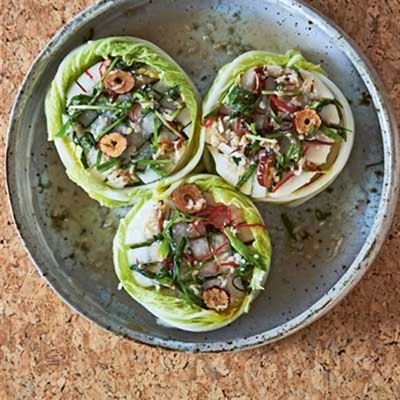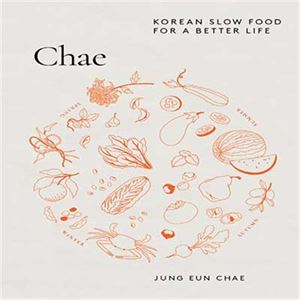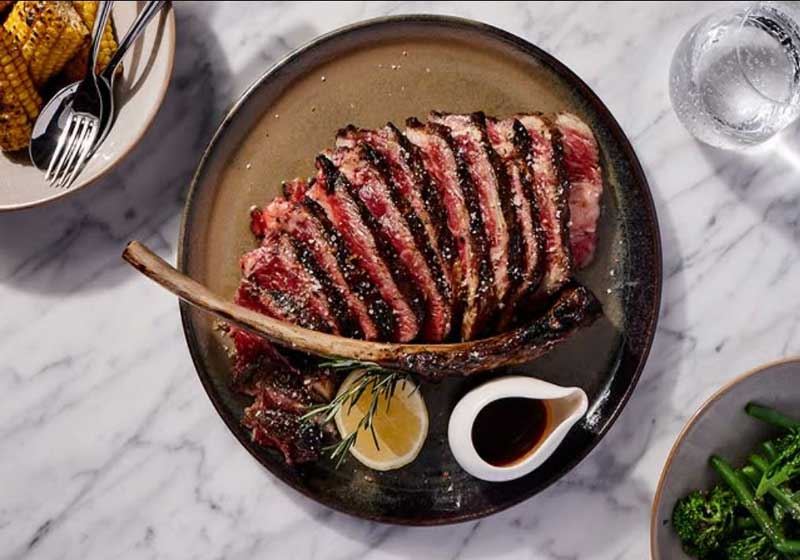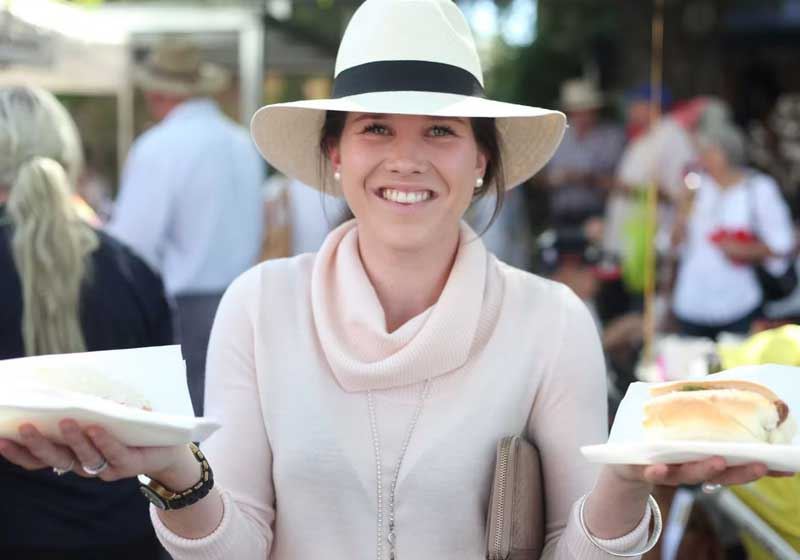Pomegranate Kimchi - Chef Recipe by Jung Eun Chae

Ingredients
2 daikon (white radishes), destemmed
30 g coarse sea salt
10 large napa cabbage leaves
5 dried black fungus (wood ears)
125mL anchovy & kelp broth (page 19)
Kimchi filling:
6 jujubes, deseeded
1/4 daikon (white radish), destemmed, peeled and julienned
6 chestnuts, shells removed, julienned
55 g mustard greens, cut into 3 cm lengths
45 g chives, cut into 3 cm lengths
1 cayenne chilli, destemmed and finely sliced
1 green chilli, destemmed, deseeded and julienned
Kimchi seasoning:
250 g glutinous rice paste (page 21)
80mL aekjeot (fish sauce)
2 Tbs minced garlic
3 cm piece of ginger, peeled and julienned
Tip:
Raw chestnuts can be a tricky ingredient. To assist in peeling, you can cut a little cross in the shell and warm them in a microwave to loosen the skin.
Method
Peel and cut the daikon crossways into 6 cm slices. Place the slices on one cut side and deeply score the other cut side in a crosshatch pattern, leaving the bottom 1 cm uncut so the radish doesn’t break apart.
Combine the salt with 1 litre water in a container. Add the radish, crosshatched surfaces facing downwards, then add the cabbage leaves and leave for 2 hours.
Soak the dried black fungus in a bowl of lukewarm water for 1 hour, then rinse and julienne finely.
Next, prepare the kimchi filling. Run your knife along the flesh side of each half jujube to flatten it out. Julienne, then combine with the rest of the filling ingredients in a bowl.
Mix all the kimchi seasoning ingredients in a bowl, then mix thoroughly with the prepared filling.
Drain the radish and cabbage and carefully stuff the crosshatches in the radish with the filling.
Wrap each piece of radish in a napa cabbage leaf and place, side by side, in a container. Mix the left-over filling with the anchovy and kelp broth and pour into the container, seal and leave to ferment at room temperature for 24 hours, then refrigerate in a sealed container and consume within a week.









